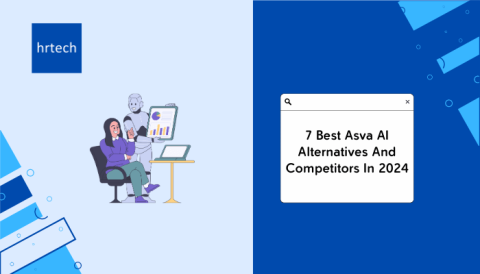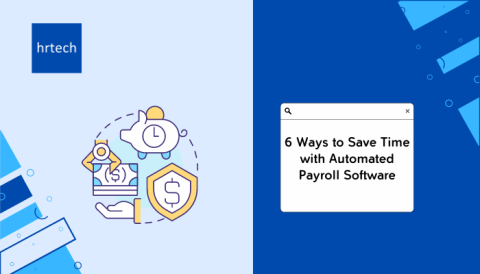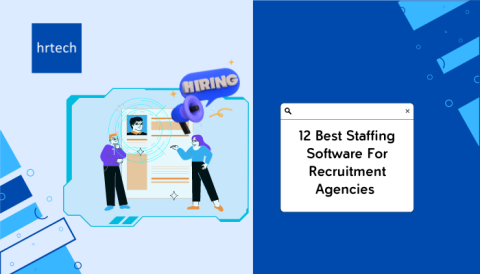The adoption of HR technology comes with its unique set of challenges, and one of the primary concerns for many organizations is cost. While digital solutions promise streamlined processes, hidden expenses often creep in, making budgeting a daunting task.
Many leaders underestimate the true costs of HR tech adoption, with studies showing that nearly 50% of HR projects exceed budget expectations, often due to hidden expenses like training, maintenance, and change management. This gap in budgeting is frequently due to limited involvement in the day-to-day HR system processes, leading to underinvestment and suboptimal outcomes. In this blog, you’ll gain insights into managing these financial challenges effectively to ensure a smooth HR tech adoption process.
We’ll dive into strategies to align budgets with your HR goals, approaches to change management that foster smoother transitions, and proven tactics to leverage technology effectively. Equip yourself with the knowledge to avoid common pitfalls and maximize your investment in HR technology.
Understanding Cost Concerns in HR Tech Adoption
When organizations consider adopting HR tech, cost is often one of the first concerns that come to mind. But the actual expenses go beyond the initial price tag. In understanding the Role of HR Technology in Human Resources, organizations must evaluate the total cost of ownership by considering hidden costs like maintenance, training, and the potential need for upgrades.
According to the SHRM the 60% of HR leaders believe their current technologies hinder rather than improve the employee experience.
Budget Management and Financial Planning
It’s crucial to have a comprehensive financial plan that ensures investments in HR tech align with the actual needs and capabilities of HR teams. This means not just cutting costs, but managing the budget wisely.
Cost-Effective Systems and Tools
Organizations should emphasize selecting cost-effective systems and tools. There’s significant room for savings here, with data from SHRM indicating that 53% of SaaS licenses go unused.
This represents a huge opportunity for companies to improve their budget management by choosing solutions that deliver value and better align with their specific needs.
Avoiding Vendor Regret and Integration Costs
Another essential consideration is avoiding vendor regret and hidden costs related to integration. It’s important to thoroughly assess potential vendors and their solutions—not just for their initial cost, but also for their integration capabilities with existing systems and their adaptability to future needs.
Choosing a system that fits well with organizational expectations can save costs associated with adjustments and productivity loss.
Addressing Change Management in HR Tech
In the HR Tech adoption, addressing change management is crucial for a smooth transition. Understanding the employee’s change journey is the first step. Employees must feel adequately supported, which means closing skill gaps through comprehensive training, maintaining morale, and keeping them engaged.
Acknowledging their journey ensures that the transformation aligns with the larger strategic goals of the organization and prepares the workforce for the shift. As we look toward the Future of HR Technology Trends, these elements become even more essential, setting the foundation for a workforce ready to adapt to continuous advancements in HR tech.
Developing New Neural Pathways for Change
Change involves developing new neural pathways—essentially shifting employees’ habitual processes to adopt new ones. It’s not just about training but also about repeated practice and encouragement. This gradual adjustment helps employees get comfortable with new systems, making them second nature over time.
Leveraging Internal Change Champions
As employees experiment with new processes, having internal change champions can significantly ease this evolution. These champions are often well-respected peers who advocate for the new changes. They can help address concerns and provide a relatable figure for other employees to follow. They play a crucial role in fostering an environment where the organization welcomes and supports change.
Preventing Employees from Reverting to Old Habits
Leaders must take action to prevent employees from reverting to old habits. Consistent and transparent communication is key. Employees must understand the rationale behind the change, how it benefits the organization and themselves, and the consequences of not adopting the new systems.
Moreover, selecting user-friendly HR tools can reduce resistance, as these tools have steep learning curves. This is further supported by fostering a collaborative environment, as highlighted in a case study on overcoming resistance with user-friendly technologies.
By involving users in decision-making and providing all necessary support, organizations can create an atmosphere that embraces, rather than resists, change.
Effectively Promoting New HR Technologies
Effective communication ensures employees understand the new technology’s value by emphasizing features that improve efficiency and support company goals. Highlighting insights from Top HRIS Companies can also help demonstrate the proven benefits of these tools, lending credibility to the adoption process.
To effectively communicate these benefits, consider using a variety of platforms and methods. Company-wide meetings, department-specific workshops, and informative emails can all serve as mediums to convey how the technology aligns with the company’s objectives.
According to Vorecol, employee resistance to HR tech adoption often stems from key concerns: 52% worry about data privacy and security, 43% fear that new technology might threaten job security, 36% feel a lack of training and support hinders them, and 28% worry about losing human interaction in the workplace. Addressing these concerns with clear communication, robust data protection, customized training, and reassurance about the value of human roles can significantly boost adoption rates.
These efforts foster enthusiasm and ensure everyone is on the same page regarding the technology’s potential impact.
Innovative Approaches to Drive HR Tech Adoption
To drive effective HR tech adoption, companies are embracing innovative strategies that focus on user experience and engagement. From deploying mobile-friendly platforms that allow employees easy, on-the-go access to integrating gamification elements like rewards and badges, these approaches make technology more accessible and enjoyable. Exploring the Core Benefits of HR Tech, companies can create a more intuitive and rewarding experience, ultimately boosting engagement and adoption across the organization.
| Innovative Approach | Description |
| Deploying Mobile-Friendly Technologies | Ensures employees can access HR platforms on-the-go, making it easier to stay connected and engaged regardless of location or device. |
| Incentives and Gamification for Adoption | Adds elements like leaderboards, rewards, or badges for usage milestones, making adoption more engaging and rewarding for employees. |
| Continuous Improvements and Updates | Regular updates ensure that the technology evolves with user needs and fixes any issues, which builds trust and keeps users engaged over time. |
| Personalized Onboarding and Training | Customized training sessions to various skill levels and learning styles, making the onboarding process smoother and more effective. |
| User-Centric Design and Simplicity | Prioritizes a user-friendly design that’s intuitive and visually appealing, lowering the barrier to adoption for all levels of tech proficiency. |
| Transparent Communication and Change Management | Proactively addresses the “why” behind new tech, helping employees understand its value to them personally and professionally. |
Strategies for Managing Resistance and Ensuring Training
Effective strategies for managing resistance and ensuring training are essential to smooth HR tech adoption. Customized training sessions that cater to different learning styles boost confidence and ease the transition, while ongoing support, such as accessible help resources, further reinforces adoption. Engaging employees early in the process and offering continuous training options fosters a positive attitude toward change and builds a foundation for sustained success.
Identifying and Addressing Employee Resistance
Managing resistance to new HR technologies requires a multifaceted approach that addresses employee concerns while ensuring they are well-equipped to embrace the change.
One significant source of resistance is the fear around data privacy and security; a Deloitte study reveals that 52% of employees are apprehensive due to these concerns. To tackle this, HR professionals must prioritize comprehensive security and privacy training.
This involves clear communication about data protection measures, such as encryption and access controls, as well as regular updates to keep staff informed about the latest practices in maintaining data confidentiality.
Addressing employee resistance is also about recognizing the broader concerns like perceived threats to job security and a lack of adequate support. Involving employees in the decision-making process related to the selection and design of new HR technologies can significantly diminish these apprehensions.
Research by Gartner shows that such involvement can lower resistance by up to 40%. Transparent communication that elucidates the advantages of the technology, like improving work efficiency while maintaining human roles, builds trust and acceptance.
Comprehensive Security and Privacy Training
Training plays a crucial role in managing resistance effectively. Providing online and on-site training materials allows catering to different learning preferences. Interactive modules, such as simulations and case studies, make the learning process engaging and applicable.
Personalized learning paths that adapt to an employee’s progress can ensure that each individual gets the training they need in a way they can easily digest.
Providing Online and On-Site Training Materials
Combining these learning pathways with mentorship programs can further reduce resistance. Experienced users mentoring newer ones fosters a supportive environment that bolsters confidence in utilizing the new systems.
Gamification of the training process, through elements like rewards and leaderboards, can add a level of fun and motivation, while incentives for achievement can drive engagement.
Finally, continuous support through real-time assistance, ongoing webinars, and comprehensive FAQ resources ensures that employees feel backed throughout the transition. This ongoing availability of resources reinforces the training and makes the adoption process smoother.
By leveraging robust training and support strategies, organizations can effectively mitigate resistance and ensure a successful integration of new HR technologies. hrtech offers a comprehensive marketplace of solutions designed to support this transition, providing resources that make adoption smoother and more effective. Explore hrtech’s marketplace to find the right tools and support for your organization’s HR tech needs.
Tracking and Optimizing HR Tech Usage
As organizations move towards adopting modern HR technologies, effectively tracking and optimizing their usage is crucial for success. Gaining insights into how these tools are being used helps in refining their deployment for better outcomes.
Using Analytics to Track End-User Behavior
Understanding end-user behavior forms the foundation of any optimization process. By employing analytics tools, organizations can track and analyze how employees interact with HR technologies.
These tools provide valuable insights into user behavior by analyzing usage patterns, which can then be used to identify areas where additional support or training is necessary.
Observing how often certain features are accessed or which functions are avoided can help in enhancing user experiences for smooth tech adoption.
Collecting Feedback through Surveys and Focus Groups
In addition to statistical data from analytics, gathering qualitative feedback from users provides a clearer picture of user satisfaction and potential areas of improvement. Feedback can be collected through surveys, focus groups, or in-app feedback forms.
This continuous feedback loop allows organizations to identify pain points that may not be visible from analytics alone, and to make timely adjustments to the technology. Encouraging employees to share their experiences showcases that their input is valued, helping in fostering full engagement with the technology.
Highlighting Key Performance Metrics for Improvement
Organizations must monitor key performance metrics (KPIs) to gauge how technology impacts productivity and overall business goals. These KPIs might include employee engagement rates, productivity enhancements, and ROI from software implementation.
Tracking these metrics helps organizations understand where the adoption stands and which areas require more attention. Using customizable dashboards to focus on specific KPIs relevant to different stakeholders, such as recruitment metrics for HR managers, can provide deeper insights.
Furthermore, comparing these metrics against industry benchmarks offers a comprehensive perspective on the software’s success and areas for potential improvement.
For more detailed strategies and insights on implementing these practices effectively, you can refer to specific threads and research like this insightful discussion found on r/HRTechnology.
Sustaining Long-term Success in HR Tech
Organizations must commit to ensuring the long-term success of HR technology through thoughtful strategy and dynamic execution.
Selecting the Right Vendor Partners
Organizations must choose vendors with proven reliability, security, and the ability to align their solutions with specific business objectives. This partnership is not just a single transaction but a relationship built on trust and mutual growth.
Organizations must choose vendors who offer scalable solutions that adapt to their evolving requirements and keep pace with technological advancements. Robust customer support is also essential, as it significantly impacts both the initial adoption and the technology’s enduring utility.
Continuous Tech Adaptation
Continuous improvement requires ongoing adaptation and using feedback for iterative enhancements. Establishing a dedicated change leadership team, composed of representatives from various departments, is one way to ensure that insights are swiftly acted upon.
Such a team fosters a culture of continuous improvement across the organization, motivating employees to propose enhancements and facilitating sustained tech optimization efforts.
Making Technology Indispensable to HR Functions
Making technology an indispensable part of HR functions goes beyond mere integration; it’s about ingraining the technology into the fabric of daily operations.
This can be achieved by ensuring that the technology aligns with overall business goals, which helps in gaining support from stakeholders and illustrating how HR technology supports wider organizational objectives.
Seamless integration with existing systems is also vital, as it reduces data discrepancies and minimizes training burdens on employees. Additionally, ongoing, contextual training ensures that employees can efficiently incorporate new tools into their workflows.
Adopting a Data-driven Approach
Finally, adopting a data-driven approach empowers organizations to make informed decisions, thereby enhancing HR’s strategic role. By employing real-time analytics and automating routine tasks, HR teams can shift their focus from transactional duties to strategic initiatives like talent development and workforce planning.
As technologies such as AI and cloud computing continue to evolve, HR departments must also evolve to leverage these advancements, ensuring they meet emerging challenges with agility and foresight.
Regular technology updates and user training in new features further cement the technology’s place as a pivotal HR tool. This sets a foundation for a responsive, efficient HR department that not only adapts to but also anticipates the needs of the organization.
Recap of HR Tech Adoption Strategies
Concluding our exploration into successful HR technology adoption, it’s clear that a holistic strategy is key. Effective adoption hinges on a blend of technology integration, employee engagement, and transparent communication.
Simplifying new systems and ensuring they work seamlessly with existing tools helps create a smoother, less disruptive transition. Engaging employees and line managers from the start guarantees that the technology aligns with user needs, while clear communication and ongoing training help reduce resistance and uncertainty.
Automation, too, plays a significant role, allowing HR teams to shift focus from manual tasks to strategic initiatives. Analytics enhance this further, empowering organizations to make data-driven decisions that improve core HR functions, from recruitment to employee engagement.
As HR technology continues to evolve, trends like AI, machine learning, and cloud computing are driving a new era. Organizations that embrace these innovations can sustain a competitive edge, especially as remote and hybrid work environments become the norm.
Continuous improvement is crucial. Regular updates ensure that HR systems stay relevant and responsive to workplace demands. Additionally, secure data practices and a well-prepared workforce for tech transitions, like cloud migrations, are key to sustainable advancements.
By following these strategies, hrtech helps organizations thrive in the evolving landscape of work. Interested in discovering how hrtech’s solutions can elevate your HR operations? Contact us to learn more!





